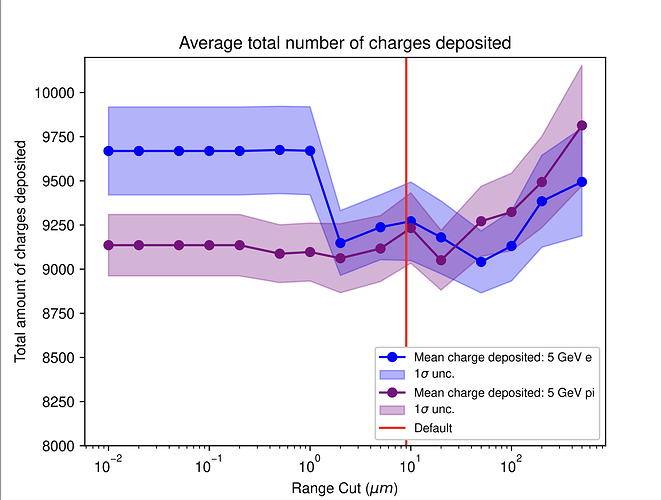Dear allpix users,
I’m running a simulation of a LGAD sensor (1.3mm x 1.3 mm, 50 um thickness) and I wanted to test the impact of depositionG4 module parameters on the final results of the simulation.
I am then running with the config below, just changing the range_cut parameter, then I’m taking the average total deposited energy in the sensor for different values of range_cut (1000 events, fixed seed). I’m observing a behaviour that I don’t understand and I was wondering if some allpix/G4 expert could explain it to me.
In particular, I’m puzzled about the fact that the deposited energy behaviour is different between electrons and pions. Why does it drop for electrons at some point (to the level of pions), and why there is an increase for very high values of the parameter for both?
I’ll post below the example of the config I’m using and the plot with the results of this study.
Thank you!
[Allpix]
detectors_file = “example_detector.conf”
number_of_events = 1000
random_seed= 2301513560683328971
[GeometryBuilderGeant4]
world_material = “air”
[DepositionGeant4]
physics_list = “FTFP_BERT_LIV”
particle_type = “e-”
number_of_particles = 1
source_energy = 5GeV
source_position = 0.mm 0um -200mm
source_type = “beam”
beam_size = 0.1mm
beam_direction = 0 0 1
max_step_length = 10um
output_plots= 1
cutoff_time= 221s
range_cut= #this param is changed
[ElectricFieldReader]
